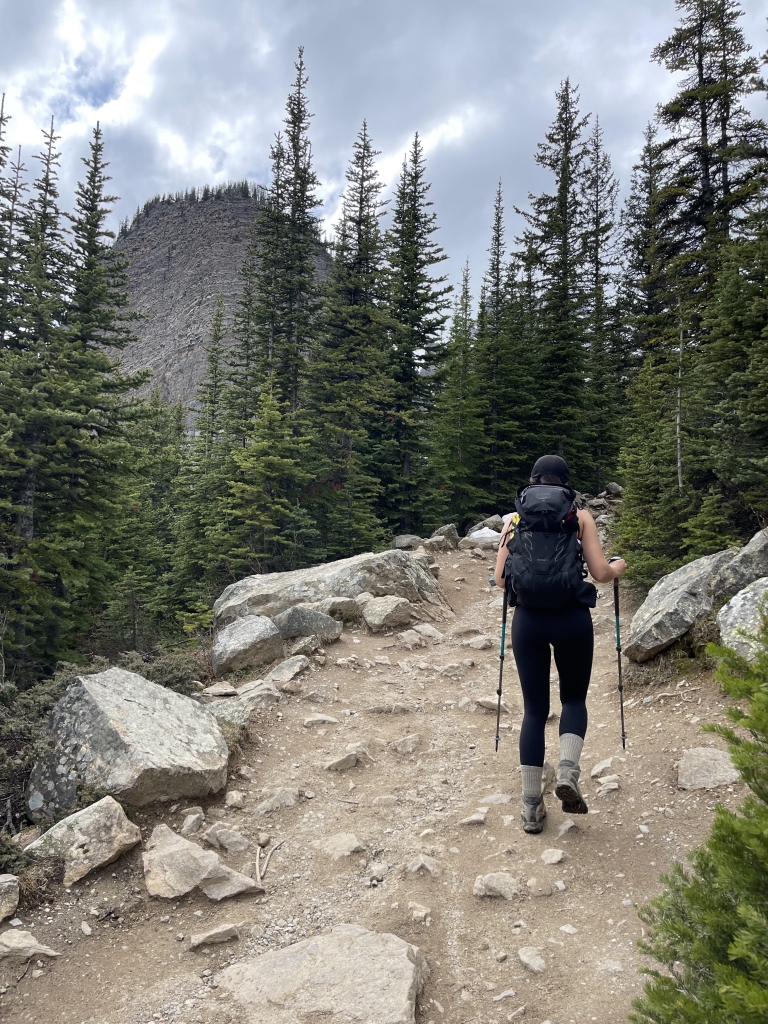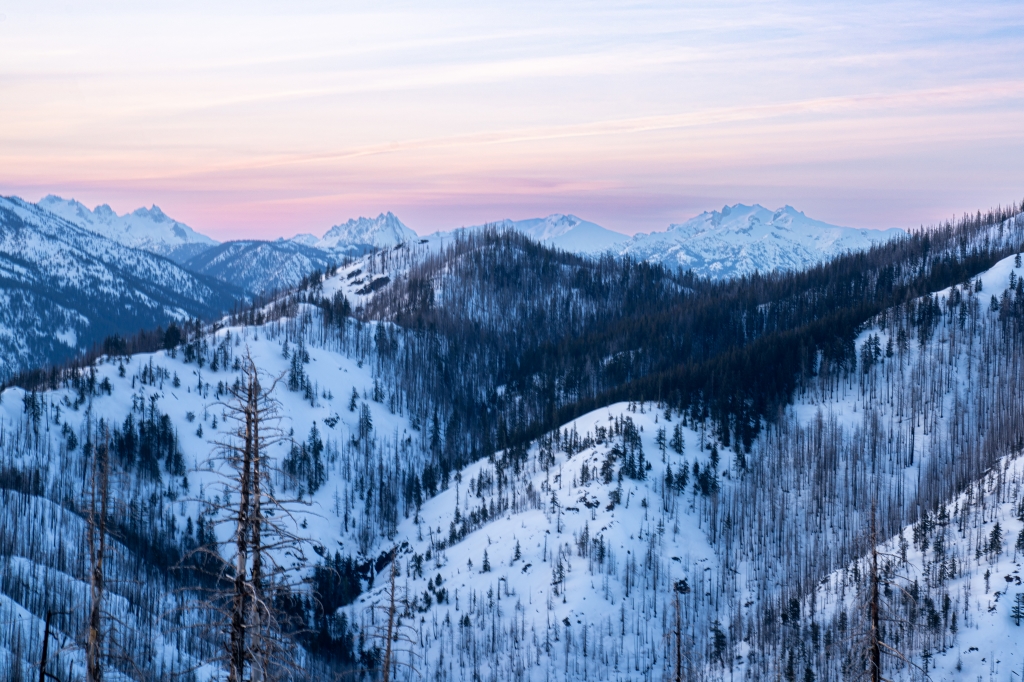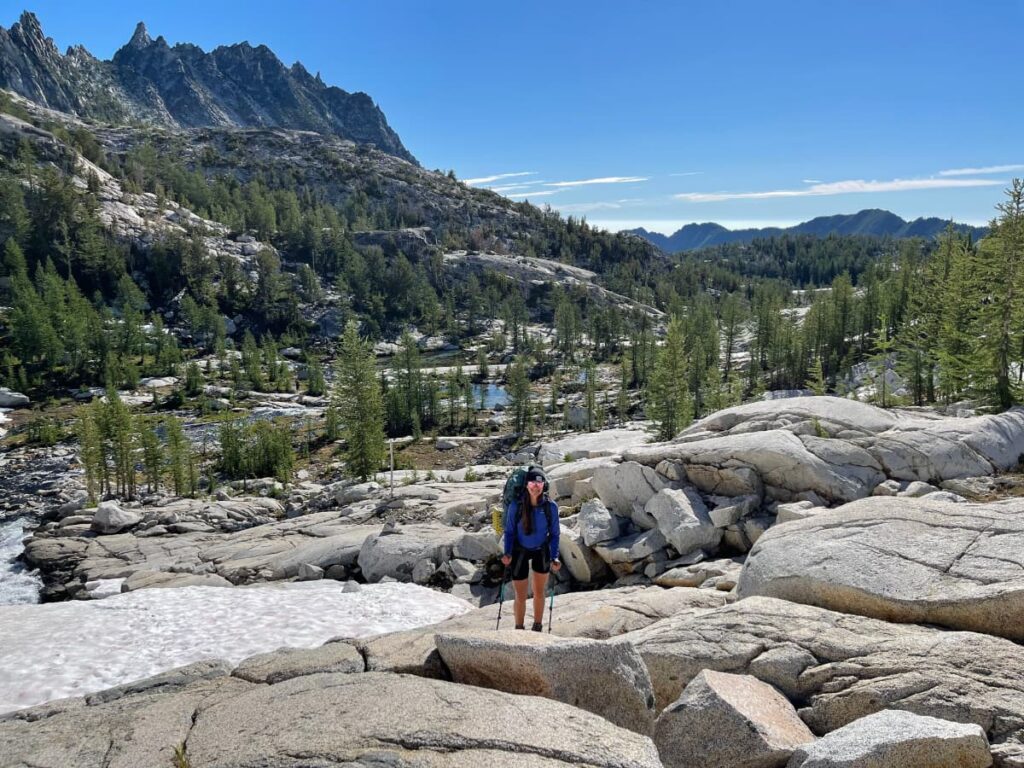I get so many gear related questions on what type of gear one needs to get started hiking. And while this topic might feel overwhelming for someone just dipping their toes into the hiking world for the first time, it really isn’t. As long as you get the gear basics covered and do your weather and logistics research you should have a great hike!

All Trails
I think the most important part of getting started is start small and gradually work your way up to bigger objectives. I can’t recommend All Trails enough finding and navigating hikes.

Packing List
- Fitted day hike backpack – It is crucial to test your backpack out prior to your hike as an ill fitting backpack can become quite painful. The heavier the pack the more care you need to take in choosing and distributing weight throughout your pack. Osprey packs are most comfortable for my body and I own 3 different pack sizes for my various adventures 30 L, 55 L, and 85 L.

- Rain fly for your backpack -make sure your rainfly is rated for you backpack size.

- Hiking boots that fit well – Hiking boots can be tough to figure out as our feet are all so different. I have tried countless hiking boots over the years and have found that Danner’s fit me best and hold up quite well. I currently have a pair of Danner’s regular hiking boots, a pair of insulated Danner’s, and a pair of Danner trail runners.

- Headlamp + a spare battery – I love my Petzl Actik Core headlamp! The battery is rechargeable, it has multiple settings with the highest being 450 lumens, and its sturdy enough to withstand pretty cold temperatures. I use this headlamp to summit WA volcanos like Mt Rainier.

- Downloaded off line All Trails map
- Garmin InReach (at least one person in your party should have one of these) – This item is quite pricey but it has been the difference between life and death in countless situations. So if you plan on making hiking a hobby please invest in some form of satellite communication. Make sure to activate and set up a monthly subscription and familiarize yourself with how to use your device. Also, many of these devices have apps that connect to your cell phone. In the event of an actual emergency it is imperative you have this app for quick and efficient communication with SAR. It is also handy to have the local SAR number saved in your device to cut down on communication time as 911 will be serving as a middle man.

- Trekking poles – While these are optional I can’t tell you how many falls my hiking poles have saved me from. I highly recommend cork handled trekking poles over other materials as they are much more comfortable to grip all day and in the heat, rain, and cold.

- Water bladder with extra water – Running out of water is extremely dangerous so I always bring extra. I love my 3 L water bladder as it allows me extra water space for longer hikes.

- Snacks + extra just in case of emergency. I like to always have a hydration multiplier, protein, sweets, and salty snacks. Sometimes if I can afford the weight I will get real fancy and pack in a sandwich or something similar.

- Layers (merino wool socks, hat, down jacket, light jacket, gloves, rain gear) It is important that you are prepared for varying temperatures on your hike and that you research the weather before you depart as last minute weather predictions happen all the time.

- Sunscreen – And don’t forget to reapply frequently, especially if you are on a snowfield.

- Sunglasses

- Micro spikes, these might seem optional but in Washington State many trails have a substantial amount of snow even in the summer. I keep these in my pack unless I have verified through a recent trip report that the trail is snow free.

